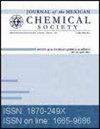某些药用植物在不同溶剂中的酶抑制和致突变性研究
IF 0.8
4区 化学
Q3 CHEMISTRY, MULTIDISCIPLINARY
引用次数: 0
摘要
摘要由于植物中含有重要的生物活性成分,它们已经为几千年来一直存在的传统医学体系奠定了基础。除了天然产物具有抗氧化、抗菌、降糖、抗癌等多种活性外,药用植物如苦瓜(Momordica charantia)、丁香(Syzygium cumini)、生姜(Zingiber officinale)、宫草(Parthenium hysterophorus)等多种治疗特性的认识有限。本研究旨在探讨这些本土植物溶剂组分的酶抑制(α -葡萄糖苷酶和乙酰胆碱酯酶)和细胞毒性能力。所有样品对α -葡萄糖苷酶均有抑制作用,但每种植物的甲醇组分对α -葡萄糖苷酶的抑制作用强于其他组分。除宫草(Parthenium hysterophhorus)甲醇提取物(33.25±0.43)外,其他植物生姜(50.33±0.99)、茴香(73.91±1.05)和苦瓜(72.30±1.17)均具有50%以上的α -葡萄糖苷酶抑制电位。不同馏分对宫参、牛蒡子、牛蒡子和白刺子乙酰胆碱酯酶的抑制率(百分比)分别为0.23±0.14 ~ 11.40±0.26、13.04±0.11 ~ 44.05±0.76、4.21±0.15 ~ 71.55±0.80和1.03±0.09 ~ 50.12±0.82。在所有被研究的植物中,苦瓜(Momordica charantia)、丁香(Syzygium cumini)和生姜(Zingiber officinale)不具有突变性。虽然观察到的生物活性略有差异,但所有植物提取物都是极好的生物活性成分来源,具有抑制α -葡萄糖苷酶和乙酰胆碱酯酶的潜力。在这方面的进一步研究是有必要的,包括生物测定指导的评估。Resumen。植物与生物活性的关系:植物与生物活性的关系:植物与生物活性的关系:植物与生物活性的关系:植物与生物活性的关系。Además许多活性物质,抗氧化剂,抗菌剂,高血糖物质,anticancerígenas许多天然产物,存在于不同种类的植物药物中,如苦瓜,紫丁香,生姜和帕特兰。El estudio actual fue diseñado para explorar las capacidades inhibidoras de enzimas (α葡萄糖苷y乙酰胆碱酯)y citotóxicas de las fracciones solvent de estas plantas autóctonas。本文研究了几种抑菌剂的抑菌效果,如:α -葡萄糖苷、α -葡萄糖苷、α -葡萄糖苷、α -葡萄糖苷、α -葡萄糖苷、α -葡萄糖苷、α -葡萄糖苷、α -葡萄糖苷、α -葡萄糖苷、α -葡萄糖苷、α -葡萄糖苷、α -葡萄糖苷、α -葡萄糖苷和α -葡萄糖苷。A excepción del extracto metanólico de Parthenium hysterophorus(33,25±0,43),今为demás plantas estudiadas, A saber。黄姜(50,33±0,99)、苦瓜(73,91±1,05)和苦瓜(72,30±1,17)对α -葡萄糖苷酶50% de potential inhibitors的影响más。Las inhibitors de acetilcolinesterasa (porcentaje de inhibición)对子宫棘球蚴(P. hysterophorus, Z. officinale, S. cumini, M. charantia estuvieron)的抑制作用分别为0,23±0,14±11,40±0,26,13,04±0,11±44,05±0,76,4,21±0,15±71,55±0,80±1,03±0,09±50,12±0,82。今天的中心有植物研究、苦瓜、西洋参、青姜和变异体变异体。Aunque se observó una ligera variación en las bioactividades, todos los提取物botánicos son excelentes fuentes de constituentes bioactivoes通过la acetilcolinesterasa去抑制α -葡萄糖苷。我们有理由认为市长investigación是一个尊重与evaluación guada穷人的关系的人。本文章由计算机程序翻译,如有差异,请以英文原文为准。
Enzyme Inhibitory and Mutagenicity Guided Investigation of Selected Medicinal Plants in Different Solvents
Abstract. Plants have developed the foundation of traditional systems of medicine that have been in existence for thousands of years due to the presence of vital bioactive constitutes. Aside from antioxidant, antimicrobial, hypoglycemic, anticarcinogenic and numerous activities of natural products, limited recognition regarding diverse therapeutic attributes of medicinal plants such as Momordica charantia, Syzygium cumini, Zingiber officinale and Parthenium hysterophorus exist. The current study was designed to explore the enzyme inhibitory (alpha glucosidase and acetylcholinesterase) and cytotoxicity capacities of solvent fractions of these indigenous plants. All the samples had inhibitory effects on alpha glucosidase, but methanolic fractionations of each plant exhibited greater inhibitory efficacy against enzyme action compared to other fractionations. Except for the methanolic extract of Parthenium hysterophorus (33.25 ± 0.43), all other studied plants, viz. Zingiber officinale (50.33 ± 0.99), S. cumini (73.91 ± 1.05) and Momordica charantia (72.30 ± 1.17) indicated more than 50% alpha glucosidase inhibitory potentials. Acetylcholinesterase inhibitions (percentage inhibition) by different fractions of P. hysterophorus, Z. officinale, S. cumini and M. charantia were in the range of 0.23 ± 0.14 to 11.40 ± 0.26, 13.04 ± 0.11 to 44.05 ± 0.76, 4.21 ± 0.15 to 71.55 ± 0.80 and 1.03 ± 0.09 to 50.12 ± 0.82 respectively. Among all studied plants, Momordica charantia, Syzygium cumini, and Zingiber officinale were non-mutagenic. Although slight variation in bioactivities was observed, all the botanical extracts are excellent sources of bioactive constituents with the potential to inhibit alpha glucosidase and acetylcholinesterase. Further research in this regard is warranted involving bioassay-guided assessment.
Resumen. Las plantas han desarrollado la base de los sistemas tradicionales de medicina que existen desde hace miles de años debido a la presencia de constituyentes bioactivos vitales. Además de las numerosas actividades antioxidantes, antimicrobianas, hipoglucemiantes, anticancerígenas y de los productos naturales, existe un reconocimiento limitado con respecto a los diversos atributos terapéuticos de las plantas medicinales como Momordica charantia, Syzygium cumini, Zingiber officinale y Parthenium hysterophorus. El estudio actual fue diseñado para explorar las capacidades inhibidoras de enzimas (alfa glucosidasa y acetilcolinesterasa) y citotóxicas de las fracciones solventes de estas plantas autóctonas. Todas las muestras tuvieron efectos inhibidores sobre la alfa glucosidasa, pero los fraccionamientos metanólicos de cada planta exhibieron una mayor eficacia inhibidora contra la acción enzimática en comparación con otros fraccionamientos. A excepción del extracto metanólico de Parthenium hysterophorus (33,25 ± 0,43), todas las demás plantas estudiadas, a saber. Zingiber officinale (50,33 ± 0,99), S. cumini (73,91 ± 1,05) y Momordica charantia (72,30 ± 1,17) indicaron más del 50 % de potenciales inhibidores de la alfa glucosidasa. Las inhibiciones de acetilcolinesterasa (porcentaje de inhibición) por diferentes fracciones de P. hysterophorus, Z. officinale, S. cumini y M. charantia estuvieron en el rango de 0,23 ± 0,14 a 11,40 ± 0,26, 13,04 ± 0,11 a 44,05 ± 0,76, 4,21 ± 0,15 a 71,55 ± 0,80 y 1,03 ± 0,09 a 50,12 ± 0,82 respectivamente. Entre todas las plantas estudiadas, Momordica charantia, Syzygium cumini y Zingiber officinale no fueron mutagénicas. Aunque se observó una ligera variación en las bioactividades, todos los extractos botánicos son excelentes fuentes de constituyentes bioactivos con el potencial de inhibir la alfa glucosidasa y la acetilcolinesterasa. Se justifica una mayor investigación a este respecto que involucre una evaluación guiada por bioensayo.
求助全文
通过发布文献求助,成功后即可免费获取论文全文。
去求助
来源期刊
CiteScore
2.00
自引率
0.00%
发文量
0
审稿时长
6-12 weeks
期刊介绍:
The Journal of the Mexican Chemical Society (J. Mex. Chem. Soc.) is a scientific, blind, peer reviewed, and open access, free of charge publication that covers all areas of chemistry and its sub-disciplines (i.e. medicinal chemistry, natural products, electrochemistry, material science, computational chemistry, organic chemistry, bionirganic chemistry, etc). It is devoted to facilitating the worldwide advancement of our understanding of chemistry. It will primarily publish original contributions of research in all branches of the theory and practice of chemistry in its broadest context as well as critical reviews in active areas of chemical research where the author has published significant contribution. The J. Mex. Chem. Soc. is a quarterly publication which language of submission and publication is English. To be suitable for publication in J. Mex. Chem. Soc., manuscripts must describe novel aspects of chemistry, high quality of results and discussion an excellent bibliographic support, and contribute to the development of the field. Routine or incremental work are not suitable for publication in J. Mex. Chem. Soc. Authors are encouraged to send contributions in electronic form. Our online submission system guides you stepwise through the process of entering your article details and uploading your files.

 求助内容:
求助内容: 应助结果提醒方式:
应助结果提醒方式:


